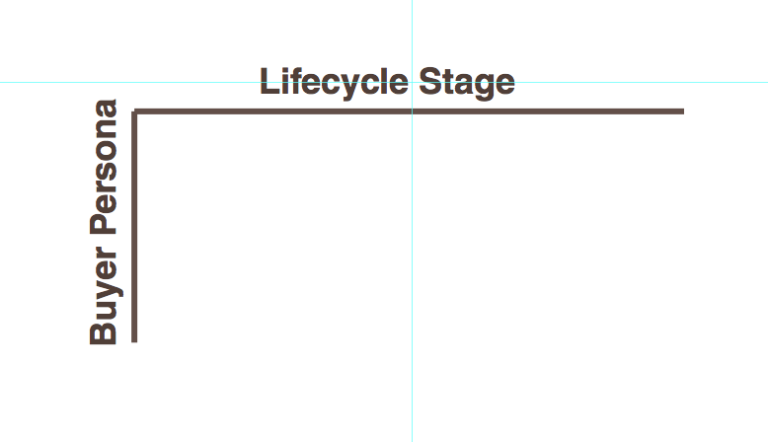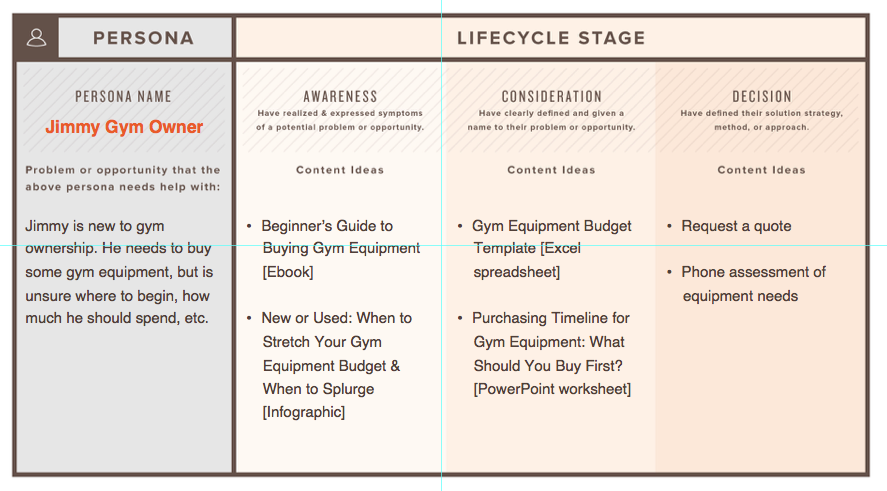Content Mapping
When it comes to content, one size rarely fits all. To ensure that your company’s content is effective at generating and nurturing leads, you need to deliver the right content, to the right people, at the right time. Content mapping is the process of doing just that.
With content mapping, the goal is to target content according to A) the characteristics of the person who will be consuming it (that’s where buyer personas come in), and B) how close that person is to making a purchase ( i.e. their lifecycle stage).
Buyer Personas
Buyer personas are fictional, generalized representations of your ideal customers. They help you understand your customers (and prospective customers) better, and make it easier for you to tailor content to the specific needs, behaviors, and concerns of different groups.
The strongest buyer personas are based on market research as well as on insights you gather from your actual customer base (through surveys, interviews, etc.). Depending on your business, you could have as few as one or two personas, or as many as 10 or 20. If you’re just getting started with personas, don’t go crazy! You can always develop more personas later if needed.
When developing buyer personas, here are some of the questions you should think about:
- What is their demographic information?
- What is their job and level of seniority?
- What does a day in their life look like?
- What are their pain points? What do you help them solve?
- What do they value most? What are their goals?
- Where do they go for information?
- What are their most common objections to your product/service?
Lifecycle Stages
The buyer persona you target with your content is just one half of the content mapping equation. In addition to knowing who someone is, you need to know where they are in the buying cycle ( i.e. how close are they to making a purchase?). This location in the buying cycle is known as a lifecycle stage.
For the purposes of this template, we’re divvying up the buying cycle into three lifecycle stages: Awareness, Consideration, & Decision.
- Awareness: In the awareness stage, a person has realized and expressed symptoms of a potential problem or opportunity.
- Consideration: In the consideration stage, a person has clearly defined and given a name to their problem or opportunity.
- Decision: In the decision stage, a person has defined their solution strategy, method, or approach.
To help you map out content topics by buyer persona and lifecycle stage, we’ve put together a simple grid system.

Your buyer persona (plus a key problem or opportunity that persona needs help with) goes on the y-axis, while the three lifecycle stages are fixed on the x-axis.
Here’s a blank template, use a new blank template to map out content for each problem or opportunity that your buyer personas need help with.

Here is an example of how to fill out the Content Mapping form.
Persona: Jimmy Gym Owner
Problem or opportunity: Jimmy is new to gym ownership. He needs to buy some gym equipment, but is unsure where to begin, how much he should spend, etc.
Awareness Content ideas:
- Beginner’s Guide to Buying Gym Equipment [Ebook]
- New or Used: When to Stretch Your Gym Equipment Budget & When to Splurge [Infographic]
Consideration Content Ideas:
- Gym Equipment Budget Template [Excel spreadsheet]
- Purchasing Timeline for Gym Equipment: What Should You Buy First? [PowerPoint worksheet]
Decision Content Idea:
- Request a quote
- Phone assessment of equipment needs
Here is an example of what your Content Mapping form should look like filled out.
